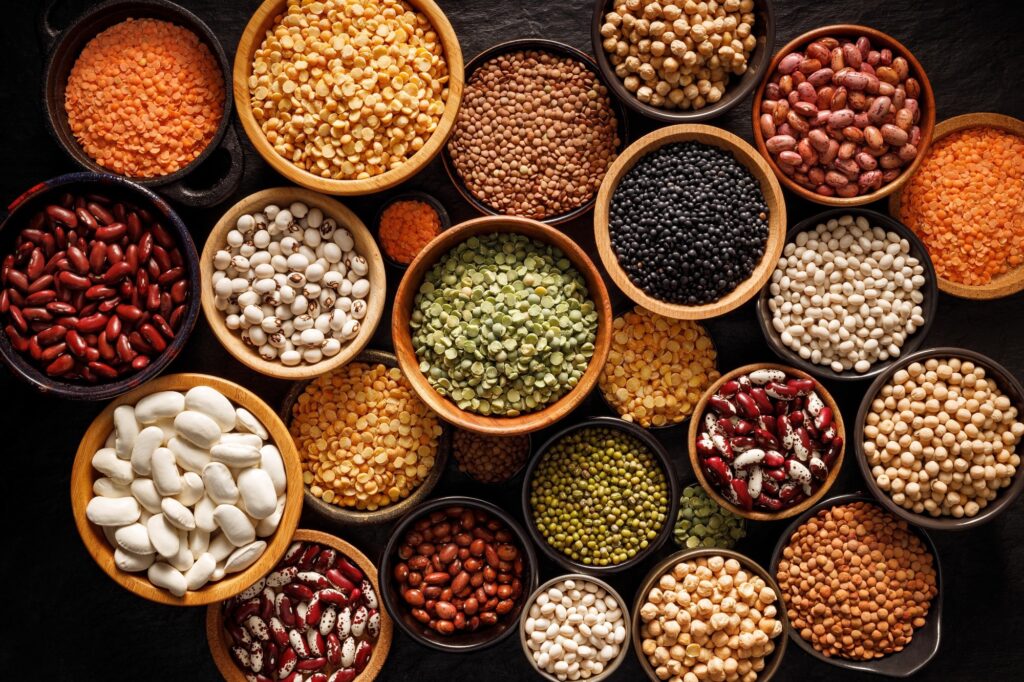
Despite their affordability and numerous health benefits, pulses remain under-consumed in the United States. However, new data sheds light on who is eating them, why they are essential for health, and how small dietary adjustments could help meet national dietary goals. A recent study titled “Pulse Consumption Trends in the US in the Context of 2025–30 Dietary Guidelines for Americans” published in Frontiers in Nutrition provides insight into these trends.
The 2025–30 U.S. Dietary Guidelines for Americans Advisory Committee has recommended prioritizing pulses over meat, poultry, and eggs in the Protein Food Group. This recommendation comes amidst findings that, apart from Mexican Americans, pulse intake in the U.S. remains low, with sociodemographic factors playing a significant role in consumption patterns.
Understanding Pulses and Their Benefits
Pulses, which include beans, lentils, chickpeas, and dried peas, are rich in plant proteins, dietary fibers, and essential micronutrients. They stand out as affordable and environmentally friendly alternatives to animal protein sources. The Advisory Committee’s push to reclassify pulses from the Vegetable Food Group to the Protein Food Group underscores their potential as healthier protein options.
Accurate analysis of current pulse consumption patterns is crucial for understanding public adherence to dietary guidelines. Previous research has highlighted significant variations in pulse intake based on education and ethnicity, but comprehensive long-term data has been lacking until now.
Study Design and Key Findings
The study utilized data from the National Health and Nutrition Examination Survey (NHANES) spanning from 1999 to 2018, analyzing dietary intake across 10 cycles with approximately 5,000 participants each. The total sample size included 48,738 adults, stratified by sex, age, income-to-poverty ratio, education, and ethnicity.
Participants were categorized based on their consumption of different pulses: beans, chickpeas, peas, and lentils. The study revealed that only 17% of participants consumed pulses on a given day, with Mexican Americans showing the highest intake levels. In contrast, non-Hispanic Black and White adults had notably lower consumption rates.
The average pulse intake among the total study population was 12 grams per day, while pulse consumers averaged 68 grams per day, surpassing the recommended 2.5 cups per week.
Interestingly, the study found a significant decline in pulse consumption from 1999 to 2006, followed by an increase between 2006 and 2008. Beans were the most commonly consumed pulse, while chickpea intake showed a marked increase since 1999. Lentil consumption, however, did not see a statistically significant rise.
Sociodemographic Influences on Pulse Consumption
The study highlighted that higher pulse intakes were observed among men, younger adults aged 31–50, and individuals with lower educational and socioeconomic status. Conversely, older adults over 70 had the lowest pulse intake. Beans were predominantly consumed by those with lower socioeconomic status, while lentils and chickpeas were favored by higher-income groups.
These findings point to the socioeconomic disparities in pulse consumption, where affordability and shelf-stability make pulses accessible to lower-income populations. However, the study notes that income and education levels did not significantly determine whether individuals consumed pulses, only the quantities consumed among those who did.
Implications and Strategies for Dietary Guidelines
The study’s findings underscore the need for targeted strategies to increase pulse consumption in line with the 2025–30 dietary guidelines. One approach could involve promoting chickpeas and lentils to higher-income consumers and ethnic groups with fewer cultural barriers to plant-based foods.
Another strategy could focus on popularizing pulse-based snacks and breakfast products, particularly among children and adolescents. Raising public awareness about the health benefits, affordability, and convenience of pulses could play a crucial role in aligning public dietary habits with national guidelines.
In 2017-2018, only 19.9% of adults met the 1.5 cups per week target, and just 10.9% met the 2.5 cups per week target.
The study authors caution that their analysis relies on one-day dietary recalls, which estimate group averages but may not accurately reflect individual consumption patterns. Nonetheless, the data provides a valuable foundation for understanding and addressing the gaps in pulse consumption across the U.S. population.
As the U.S. continues to grapple with dietary challenges, increasing pulse consumption could be a vital step toward improving public health and achieving dietary goals. With strategic promotion and education, pulses could become a more prominent feature of the American diet, benefiting both human and planetary health.







